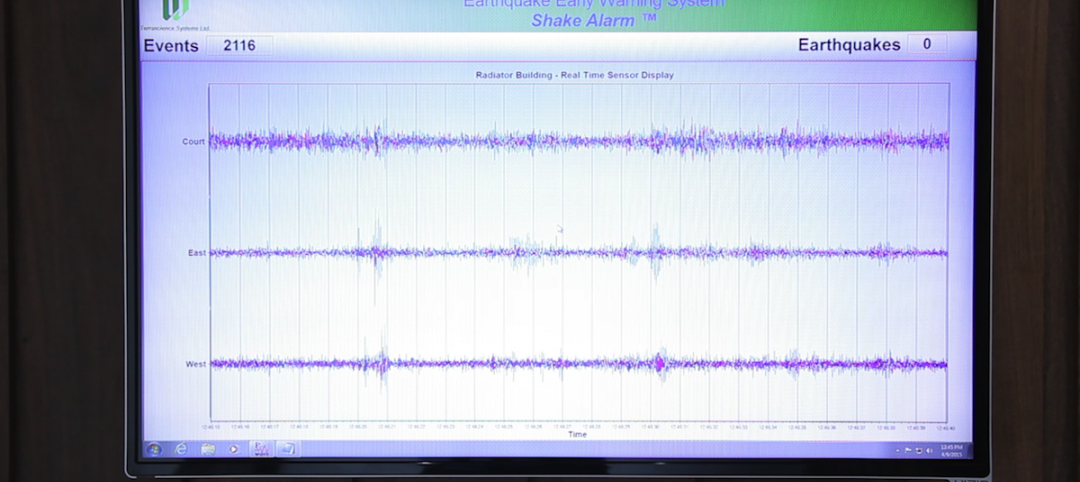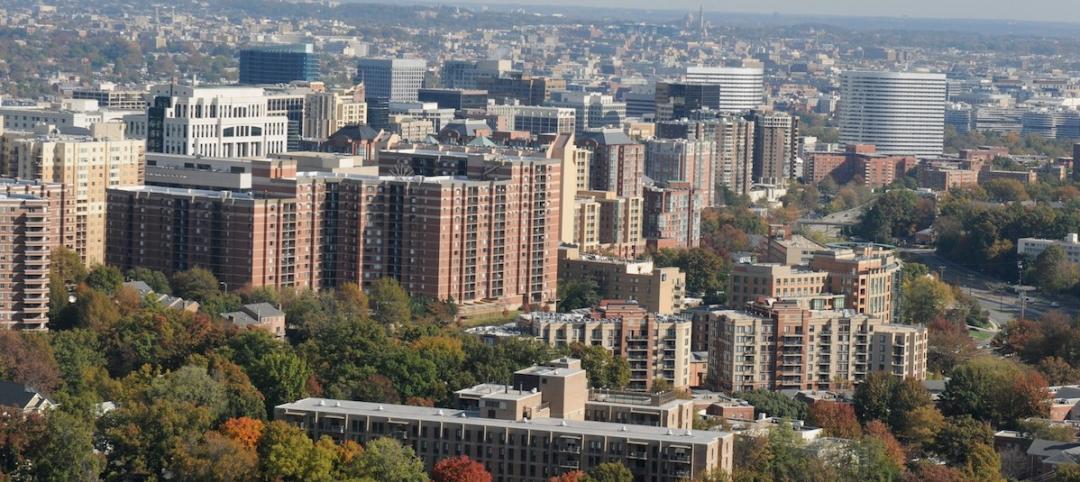Ishikawa, Japan, has experienced eight earthquakes over the past year. The constant rumblings have building owners seeking unconventional solutions.
Japanese architect Kengo Kuma found one for the former head office of fabric manufacturer Komatsu Seiren. The three-story building has been covered with Cabkoma Strand Rods, which are 9 mm-wide strings made of a thermoplastic carbon fiber composite.
As Endgadget explains, the rods make it appear that spiderwebs completely surround the building. The rods are tied to the roof and anchored to the ground, ensuring that when an earthquake hits, the entire structure will sway together and not crumble.
According to Kengo Kuma, the strings are seven times stronger than iron wires, but only a fraction of the weight. A 160-meter-long coil weighs just 26 lbs.
Related Stories
Sponsored | Fire-Rated Products | Mar 7, 2016
Fire Resistive Curtain Wall Helps Hospital Meet Fire and Seismic Requirements
SaftiFirst’s custom curtain wall complied with all the seismic requirements while still blending in seamlessly with building’s design
Seismic Design | Oct 22, 2015
Taipei 101 tower named 'world's toughest' building by Popular Mechanics
Popular Mechanics named the 10 structures that best withstand floods, winds, storms, and earthquakes.
Seismic Design | Oct 16, 2015
L.A. City Council votes for seismic retrofits for older buildings
Thousands of wood, concrete apartments subject to costly renovations.
Codes and Standards | Jul 16, 2015
Oregon to spend $300 million for seismic updates on public buildings
A survey found that more than 1,000 Oregon school buildings face a high risk of collapse during earthquakes.
Seismic Design | Jun 9, 2015
First building-specific earthquake warning system installed in North Portland, Ore.
The ShakeAlarm system recognizes and quantifies the faster but lower-energy seismic P-wave, which is the precursor to the more damaging S-wave.
Codes and Standards | Apr 12, 2015
Virginia surpasses Florida for strictest hurricane building codes
Virginia has edged out Florida as the state with the most stringent hurricane building codes, according to the Institute for Business and Home Safety’s “2015 Rating the States” report.
| Feb 20, 2014
5 myths about cross laminated timber
A CLT expert clears up several common misconceptions and myths surrounding the use of wood as a building material.
| Feb 5, 2014
7 towers that define the 'skinny skyscraper' boom [slideshow]
Recent advancements in structural design, combined with the loosening of density and zoning requirements, has opened the door for the so-called "superslim skyscraper."
| Jan 28, 2014
2014 predictions for skyscraper construction: More twisting towers, mega-tall projects, and 'superslim' designs
Experts from the Council on Tall Buildings and Urban Habitat release their 2014 construction forecast for the worldwide high-rise industry.
| Jan 21, 2014
2013: The year of the super-tall skyscraper
Last year was the second-busiest ever in terms of 200-meter-plus building completions, with 73 towers, according to a report by the Council on Tall Buildings and Urban Habitat.
















